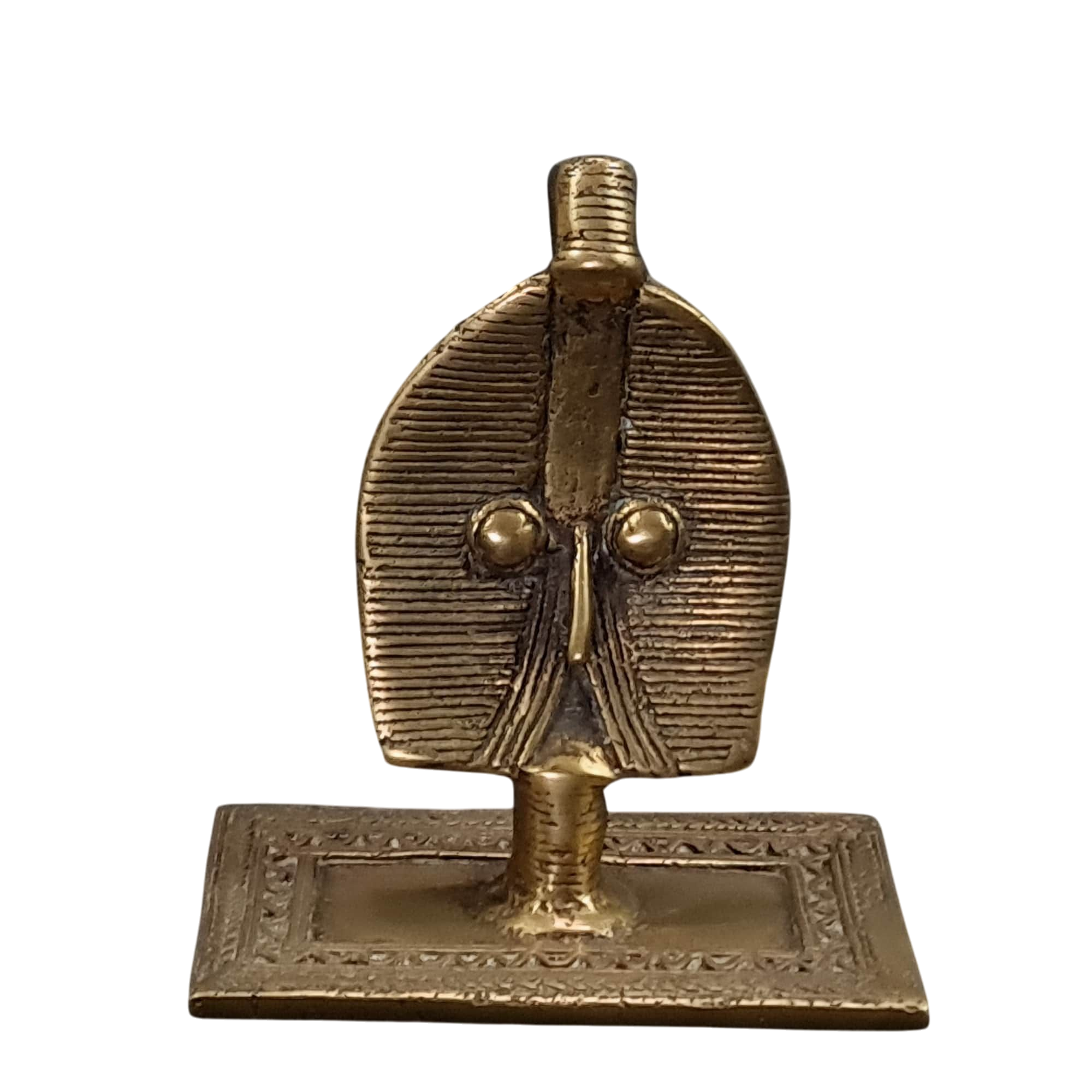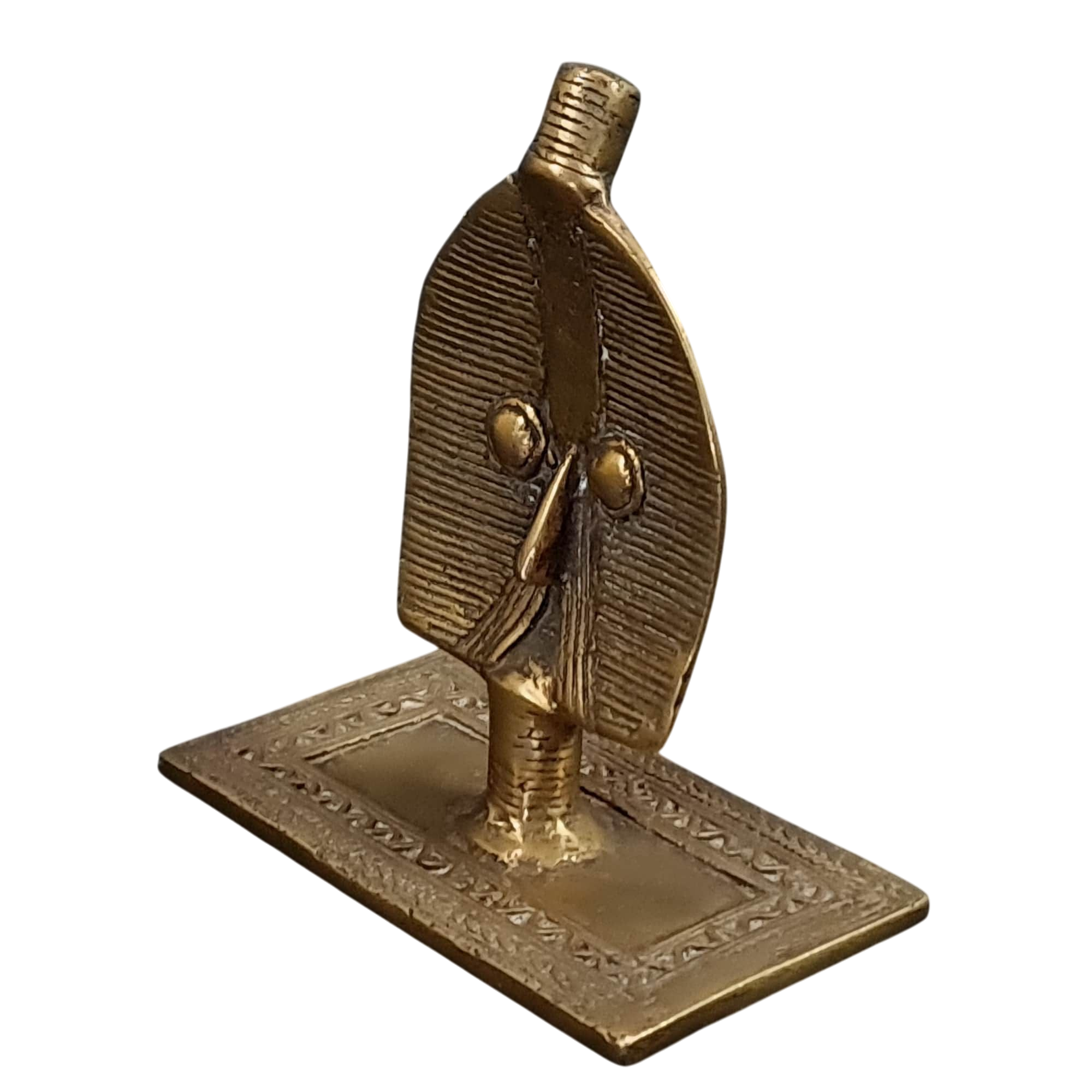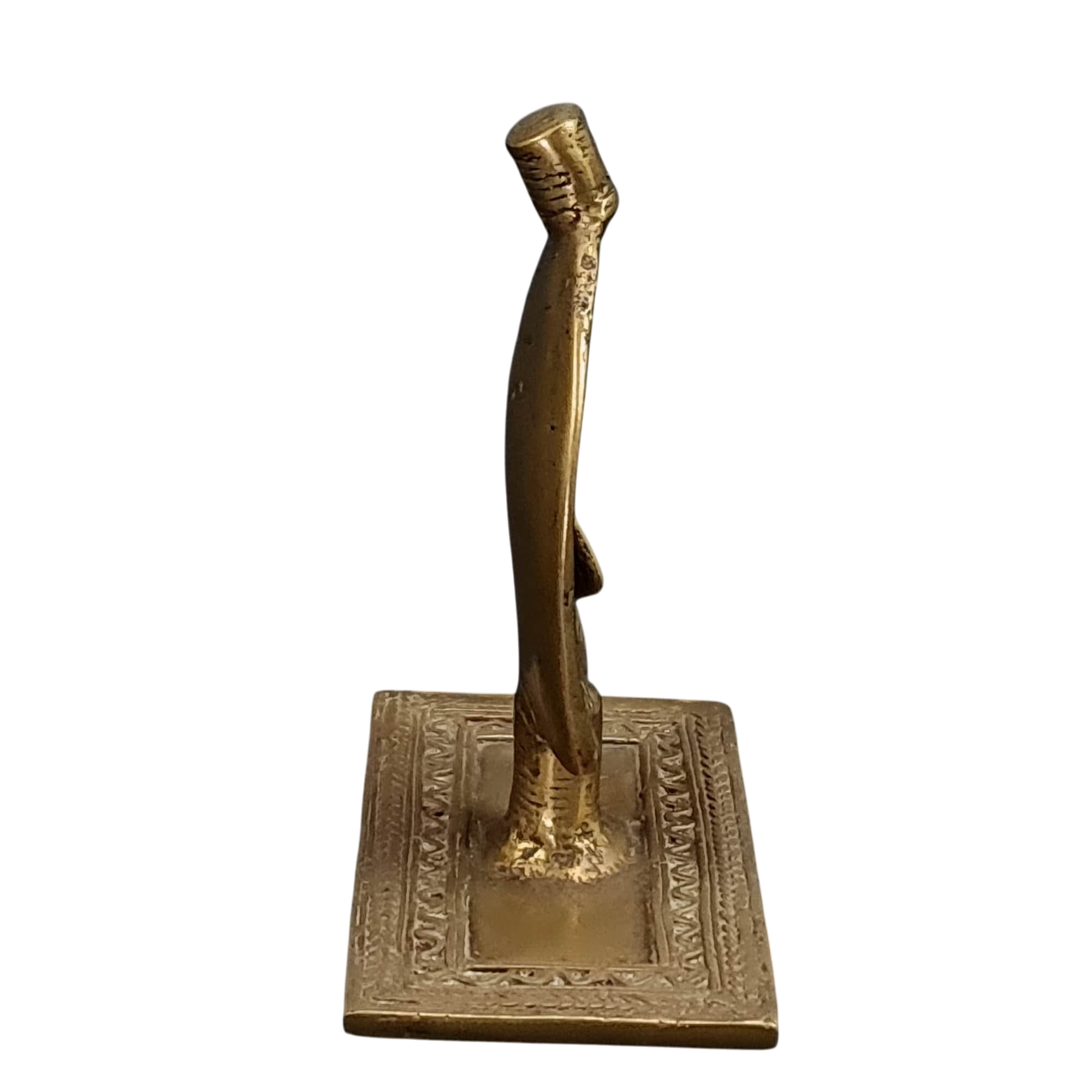Dimensions and Weight
Weight: 0.630 kg
Height: 13.5 cm
Width: 12 cm
Depth: 6.8 cm
Origin and Cultural Context
Bakota reliquaries (also known as Bwete) are ritual objects created by the Kota ethnic group, primarily located in Gabon. The Kota use these sculptures to protect the bones of their ancestors, which are placed in baskets or bark boxes topped by the metal figure.
Function and Significance
These reliquaries serve as guardians of ancestral relics, believed to protect the family and community from malevolent forces. They play a central role in funerary rites and ancestor worship, symbolizing the continued presence of protective ancestral spirits within the community.
Style and Characteristics
Bakota figures are often characterized by a stylized head with a flat, geometric face, eyes in circular or globe shapes, and engraved patterns on the metal. The metal used is generally copper or brass, often repurposed from various recycled objects. The base is typically diamond-shaped or rectangular, allowing the figure to stand upright.
Manufacturing Technique
These figures are made using the lost-wax casting technique, an ancient method of metalworking. This technique allows for intricate details and complex patterns on the bronze or brass sculptures.
Value and Collection
Bakota reliquaries are highly sought after by collectors and museums for their artistic and cultural value. Their value depends on their condition, age, and authenticity. Authentic pieces are rare and can fetch high prices in the art market.
Summary
Bakota reliquaries hold great cultural and spiritual importance for the Kota people of Gabon and are recognized for their artistic beauty and technical complexity.
Provenance
Private collection ZAMBELLI/BRUGNACCHI, assembled between 1990 and 2023.
Transferred to the Spirit Land of Africa Gallery in 2023.
Is sold




